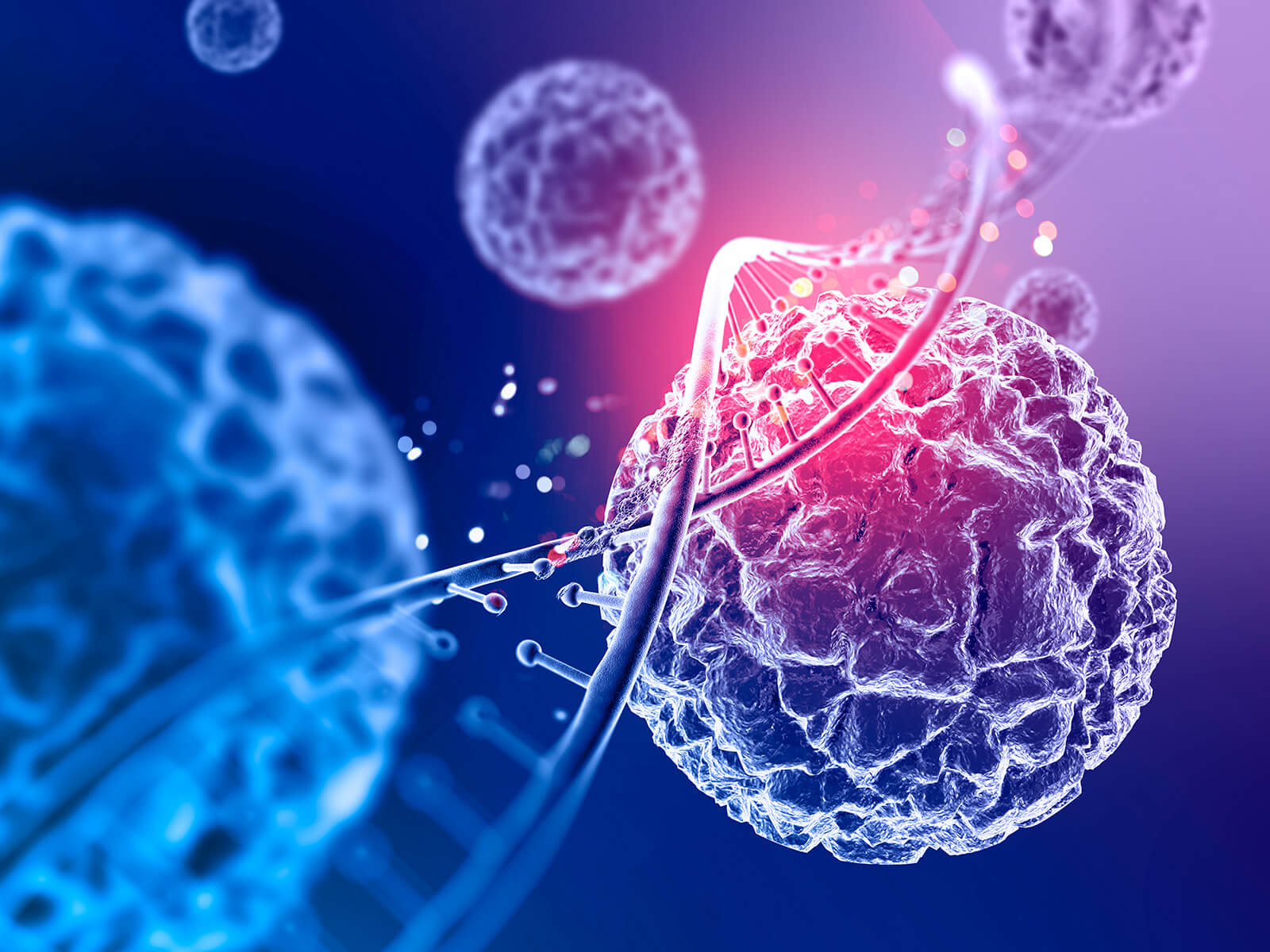
Gene regulation is a fascinating aspect of biology that involves the intricate control of gene expression. It plays a crucial role in determining how genes are activated or deactivated, ultimately influencing the behavior and functions of organisms. Understanding gene regulation is essential for uncovering the mysteries of development, disease, and evolution.
In this article, we will delve into the enigmatic world of gene regulation and explore eight intriguing facts that highlight the complexity and significance of this process. From the elegant mechanisms that enable precise timing of gene activation to the astonishing ability of cells to modify their gene expression in response to environmental cues, these facts shed light on the marvels of gene regulation.
Key Takeaways:
- Gene regulation is like a conductor directing a symphony, making sure the right genes are turned on at the right time to create different parts of the body.
- Just like a secret code, gene regulation involves chemical marks and intricate networks that control how our genes work, influencing everything from our growth to our health.
Gene Regulation is Essential for Development
During the development of an organism, gene regulation guides the formation of different tissues and organs. It ensures that the right genes are activated at the right time and in the right cells, enabling the complex process of growth and differentiation.
Gene Regulatory Networks are Intricately Interconnected
Genes do not act alone; they are part of complex regulatory networks. These networks consist of multiple genes that interact with each other, forming a delicate web of connections. Changes in one gene’s regulation can have a cascading effect throughout the entire network, leading to widespread alterations in gene expression.
Epigenetic Modifications Play a Crucial Role in Gene Regulation
Epigenetic modifications, such as DNA methylation and histone modifications, are chemical marks that can influence gene expression without altering the underlying DNA sequence. These modifications act as a regulatory layer on top of the genetic code, dictating whether a gene should be active or inactive.
Gene Regulation Can be Influenced by Environmental Factors
The expression of genes can be influenced by various external factors, including environmental cues and signals. For instance, temperature changes, nutrient availability, and exposure to toxins can all impact gene regulation, highlighting the remarkable adaptability of living organisms.
Non-Coding RNA’s Role in Gene Regulation
Contrary to the traditional notion that only protein-coding genes have functional significance, non-coding RNAs have emerged as key regulators of gene expression. These RNA molecules can interact with other genes or RNA molecules, modulating their activity and contributing to the complexity of gene regulation.
Gene Regulation Can Go Awry in Disease
Malfunctions in gene regulation can have profound consequences and are implicated in various diseases. Aberrant gene expression can lead to uncontrolled cell growth, development of tumors, and metabolic disorders. Understanding and manipulating gene regulation holds great potential for therapeutic interventions.
Gene Regulation Can Exhibit Cell- and Tissue-Specificity
Not all genes are active in every cell or tissue of an organism. Gene regulation ensures that only the necessary genes are expressed in a specific cell type or tissue. This specificity is essential for the proper functioning and specialization of different cell types within an organism.
Gene Regulatory Processes are Still Relatively Mysterious
Despite our advancements in understanding gene regulation, there is still much to uncover. The intricate mechanisms by which genes are regulated continue to reveal enigmatic phenomena that challenge our current knowledge. Unlocking the mysteries of gene regulation could revolutionize fields such as medicine, agriculture, and biotechnology.
The intricacies of gene regulation and its enigmatic facts highlight the complexity of life itself. Understanding the mechanisms underlying gene regulation opens doors to new possibilities, paving the way for advancements in various areas of science and medicine. Exploring the mysteries of gene regulation will continue to unravel the secrets of life itself, bringing us closer to the profound intricacies of the natural world.
Conclusion
In conclusion, gene regulation is a fascinating and complex process that plays a crucial role in determining how our genes function. Through various mechanisms such as transcription factors, epigenetic modifications, and non-coding RNAs, genes can be turned on or off, allowing cells to respond to different environmental cues and carry out specific functions.Understanding gene regulation is of paramount importance in the fields of genetics, development, and disease. It has revolutionary implications for personalized medicine, as it allows us to target specific genes and manipulate their expression patterns for therapeutic purposes.As we continue to unravel the enigmatic and intricate mechanisms of gene regulation, we will gain deeper insights into the complexity of life itself. From understanding the development of organisms to unraveling the mysteries of diseases, gene regulation remains an exciting and promising area of research that holds the key to unlocking the secrets of our genetic blueprint.
FAQs
1. What is gene regulation?
Gene regulation refers to the process by which the expression of genes is controlled in a cell or organism. It involves the activation or repression of genes to ensure appropriate gene expression patterns.
2. Why is gene regulation important?
Gene regulation is vital for the development and functioning of an organism. It plays a critical role in determining cell specialization, responding to environmental changes, and maintaining homeostasis.
3. What are transcription factors?
Transcription factors are proteins that bind to specific DNA sequences and control the rate of gene transcription. They can either activate or repress gene expression by interacting with other regulatory proteins and the RNA polymerase enzyme.
4. What are epigenetic modifications?
Epigenetic modifications are chemical changes to DNA and associated proteins that can influence gene expression without altering the underlying DNA sequence. These modifications include DNA methylation, histone modifications, and non-coding RNA molecules.
5. How do non-coding RNAs regulate gene expression?
Non-coding RNAs are RNA molecules that do not code for proteins. They can play vital roles in gene regulation by binding to specific mRNA molecules and either promoting or suppressing their translation into proteins.
6. Can gene regulation be disrupted?
Yes, gene regulation can be disrupted, leading to various diseases. Dysregulation of gene expression can result in abnormal cell growth, developmental disorders, and the onset of genetic diseases such as cancer.
7. What are the therapeutic implications of understanding gene regulation?
Understanding gene regulation opens up new possibilities for targeted therapies. By manipulating gene expression patterns, scientists can potentially develop treatments specifically tailored to individual patients based on their unique genetic makeup.
8. How is gene regulation studied?
Gene regulation is studied through a combination of experimental and computational approaches. Techniques like chromatin immunoprecipitation (ChIP), RNA sequencing, and bioinformatics analysis are employed to unravel the complex networks involved in gene regulation.
Gene regulation is a captivating field, but there's still much to learn. Delving deeper into gene regulatory networks reveals their intricate connections and far-reaching effects. RNA nucleotides, the building blocks of life, hold countless secrets waiting to be uncovered. RNA polymerase, the enzyme at the heart of transcription, plays a crucial role in gene expression. Explore these topics further to gain a more comprehensive understanding of the enigmatic world of gene regulation.
Was this page helpful?
Our commitment to delivering trustworthy and engaging content is at the heart of what we do. Each fact on our site is contributed by real users like you, bringing a wealth of diverse insights and information. To ensure the highest standards of accuracy and reliability, our dedicated editors meticulously review each submission. This process guarantees that the facts we share are not only fascinating but also credible. Trust in our commitment to quality and authenticity as you explore and learn with us.


